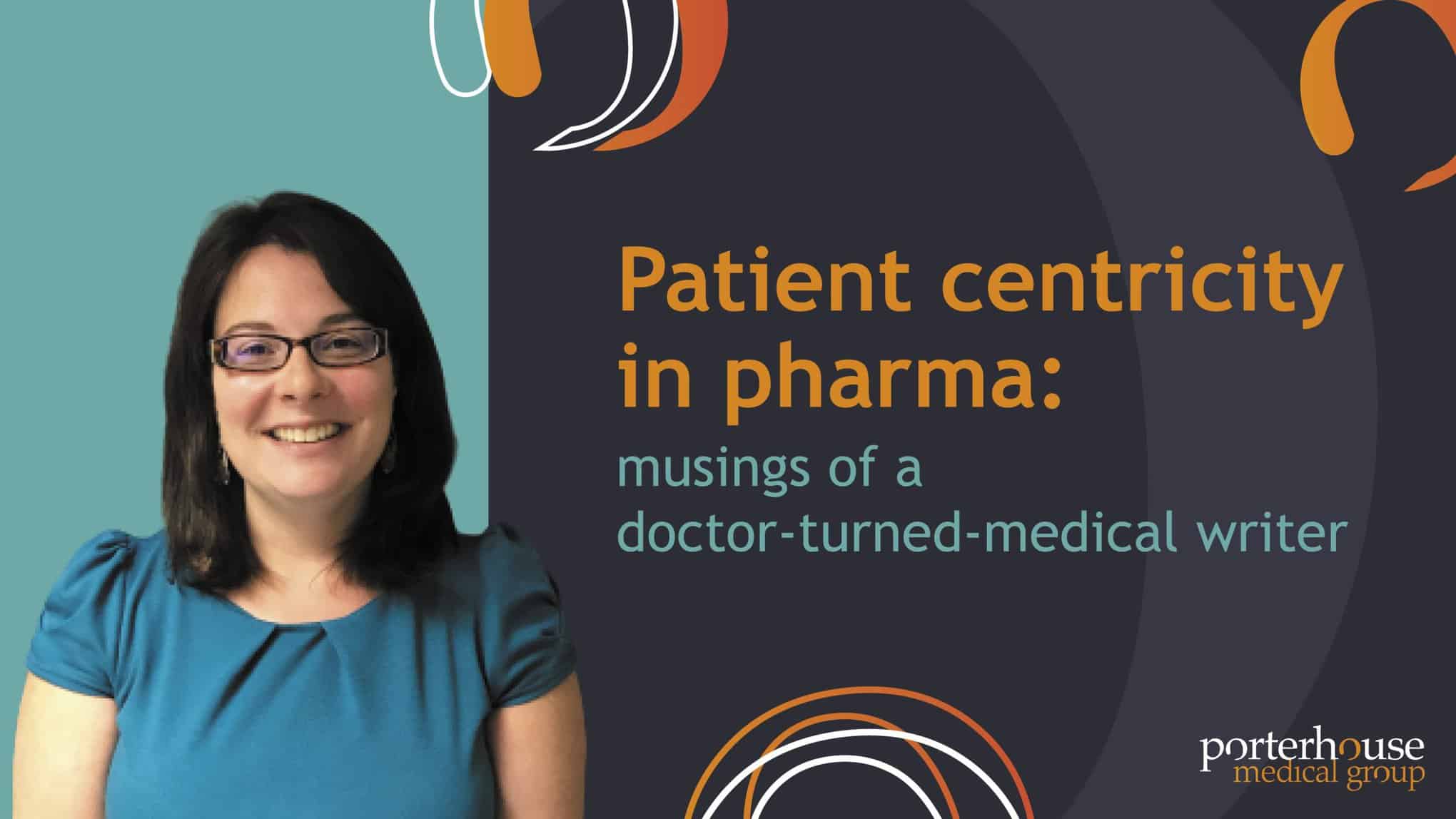Patient centricity in pharma: musings of a doctor turned medical writer
December 14, 2021 | Patient-centricity, Porterhouse Medical Advisory Group, Porterhouse Medical Group, healthcare communications
Elizabeth (Beth) Wynne-Evans, Senior Medical Writer and Medical Advisor at Porterhouse Medical Group, discusses the importance of considering the patient perspective within the pharma industry and healthcare communications

After years of looking at tumours and other pathology under the microscope, there came a point when I wondered how else I might be able to apply the specialist skill set of a histopathologist (known affectionately as the ‘pink and purple dot docs’ because of the appearance of human tissue under the microscope after diagnostic chemicals are applied) outside the field. It takes years and quite a bit of ‘magic eye’ power to interpret these dots and what the findings will mean for the patient. So, focusing in particular on the latter aspect, I made the leap to med comms, which (although decidedly lacking in pink and purple dots) promised to be a great new career. My new career enabled me to deploy my medical knowledge in a different way by interpreting scientific findings and determining how these might affect a patient’s life. But as with histopathology, it is all too easy to lose sight of the patient among the work. Why do we do what we do in either of these fields? We work to improve that patient’s life – its quality and perhaps also its quantity. To put it simply, we use our scientific knowledge to help people.
In med comms, we develop a huge range of activities and materials that will affect healthcare professionals, payors and the patient. We spell out options. We distil our understanding of diseases and enhance it with the latest data available on therapies of interest. The ultimate goal, of course, is to provide effective care for our patients. But is it only about the science and the data?
Surely, the best people to ask about what is best for the patient are the patients themselves? By leveraging a patient’s lived experience, it is possible to integrate their perspectives into the early stages of traditionally ‘industry-led’ endeavours such as research and development, and clinical trial design. This would provide valuable insights and outcomes that would resonate with the patient and could help justify new approaches. Naturally, it would be important to tailor the illustration of the sustainability and value of these outcomes to the relevant stakeholders (healthcare professional, payor or patient); however, integrating the patient perspective allows for the development of a more patient-centric approach to care.
Of course, this approach is not without its challenges. There is a requirement for the industry to comply with strict codes of conduct when engaging with a patient, and information gathering from this target audience carries the potential for unsubstantiated claims or misinformation. However, could valuable information be lost if we do not consider the patient perspective in our work?
We must adhere to the regulations, and within this remit, in recent years pharmaceutical companies have been working more closely with patients in a real effort to move towards greater patient centricity. Patient perspectives and journeys are becoming embedded in industry communications. At Porterhouse Medical, our in-house Insights team take an immersive approach to market research that is designed to capture the key behaviours and perceptions of a patient, which can be used to shape our clients’ medical communications.
Naturally, it is important to remember that every patient is unique. However, by opening an avenue for multiple perspectives to be heard, there can be a move away from a ‘one-size-fits-all’ approach to regimens that are more tailored than current treatments. These more personalised ways of working within the industry could help engender patient centricity in treatment pathways and make it a regular, integral part of care.
I now find myself on a different trajectory to histopathology, but one in which science and data are increasingly underpinned by patient centricity. One that has the potential to drive changes in the processes and approaches taken by the pharmaceutical industry and perhaps even healthcare organisations, to develop the optimal treatment and experience for a patient. One where I can (just like before when I was a pink and purple dots doc) always have that one aspect at the forefront of my work – the patient.
This content was provided by Porterhouse Medical Group




